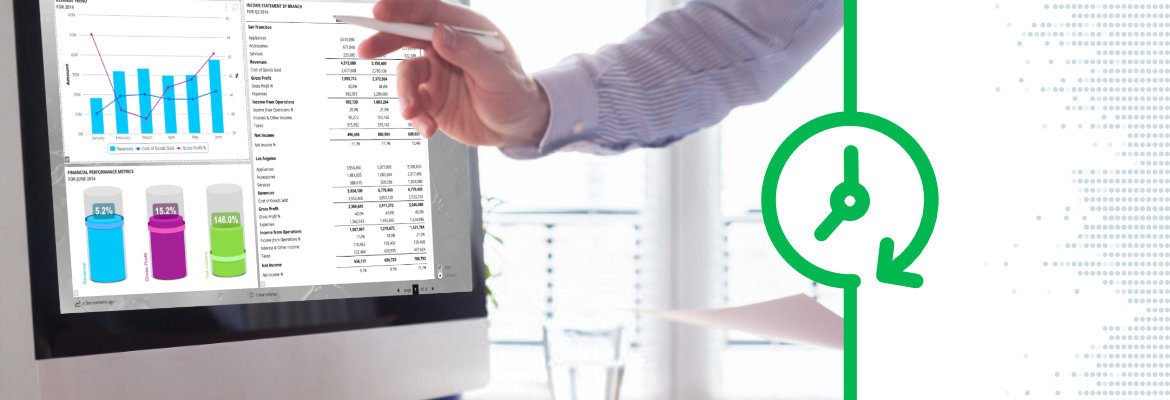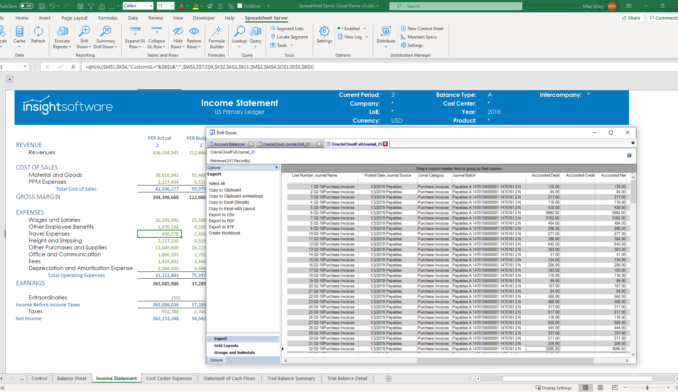Real-Time Insights Help Eliminate Common Financial Reporting Issues

At the beginning of the new decade, companies should review how well they’re utilizing today’s most important business asset: data. Over the past decade, enterprises across every industry have discovered that data is key to maintaining their competitive advantage. They’ve also discovered that turning data into actionable insights is a huge undertaking. Knowing how many stumbles and setbacks it’s taken to get to this point, the start of 2020 represents the perfect time to consider how you will leverage data moving forward.
Companies need to be self-critical right now because the majority are struggling to extract all (or even most) of the value contained inside their data. A recent Deloitte survey, for instance, asked respondents to rank how mature they’ve become at utilizing data-driven insights based on a five-point scale. Only 10 percent of respondents ranked themselves at the top, and less than 40 percent ranked in the top two. The majority of respondents fell into the bottom three categories, indicating they were aware of data’s potential and excited to leverage it but struggling to make that happen.
The question is why. After a decade or more of trying to become data-driven organizations, why do so many organizations still struggle to harness the data at their disposal? The answer, in most cases, is that they have the wrong tools.
Turning raw data into actionable or strategic insights typically involves putting it through a financial reporting process based around the ERP and an army of static Excel spreadsheets. Capable as these programs may be, neither was designed specifically for financial reporting. As a result, reporting tends to be inefficient, error-prone, and worst of all, lacking in actionable insight. Given how much time, input, and anxiety many companies invest in reporting, it’s no wonder they feel underwhelmed about what they’re getting from the data.
A New Roadmap for Financial Reporting
Common as this problem may be, the solution is surprisingly simple: Take the heavy-lifting out of financial reporting. Imagine a scenario where, instead of having to “prepare” reports, you could simply retrieve the latest figures with a few clicks. Instead of having to invest hours or days wading through data, you use that same time studying what the data is telling you. Best of all, individual users from the C-suite down take the reins of financial reporting without needing specialized training, IT assistance, or even any financial expertise. It’s the difference between hunting exhaustively for insights versus having them available on-demand.
All of this is possible thanks to breakthroughs in automation. Much of the financial reporting process, including data collection, integration, analysis, and visualization, can now run on autopilot. Automation has accelerated so much, in fact, that users can now rely on real-time insights in place of static, outdated reports.
The difference is subtle, but significant. Traditional reports are like a snapshot of a specific time and place. They provide tremendous detail, but as a report ages, the insights within become less relevant. Real-time insights do just the opposite, automatically updating themselves as soon as new information becomes available. To put it differently, real-time insights provide the best perspective into enterprise performance because they reveal conditions right now, not last week, month, quarter, or year.
Everyone would agree it’s an asset to have the newest information. In practice, however, real-time insights go beyond that, resolving the issues commonly associated with financial reporting and unlocking the true potential of data in the process. Consider the following reporting challenges you could eliminate for good.
Using Professional Accountants to Handle Data Management
Professional accountants are highly-skilled and highly-paid, yet financial reporting asks them to hunt down numbers, wrangle with data sets, and tinker with spreadsheets, the most basic kinds of data management. Over the course of a year, accountants may spend dozens of hours or even weeks worth of time on this work, time they could redirect to more important and productive things. Real-time insights liberate everyone involved from the drudgery of financial reporting so they can make the most of their time and skills.
Asking IT to Help with Every Aspect of Reporting
Another obstacle to timely reporting is the fact that generalized reporting tools tend to be highly technical, necessitating a lot of help from IT along the way. This creates a natural bottleneck that slows down the flow of insights. Real-time data speeds the flow back up by simplifying reporting and automating IT input so that accountants don’t have to rely on other departments (or even other individuals) to create customized reports. When you cut out the middleman, no one misses him.
Contending with Data Errors
Any reporting process that relies on users manually manipulating data is at risk of typos and other human errors compromising that data. The desire to rush through reporting in order to access insights faster only raises the risk of these errors. Small mistakes can have disastrous consequences, especially when faulty data guides major decisions. With automation handling reporting, speed and precision aren’t inversely proportional. Both improve dramatically, making the end report a lot more trustworthy and more impactful as a result.
Excluding KPIs from Finished Reports
After recognizing that a robust reporting process requires more resources than they have available, some companies have decided to settle for an abridged process. They’ve identified their most important performance metrics and report on those at the exclusion of all others. Understandable as this compromise may be, it forces companies to operate with blinders on that block out everything except what’s directly ahead of them. Real-time insights open up the full view by empowering decision makers to report on whatever they want, not just what they have time to find.
Making Decisions Based on Sub-Optimal Information
When one or more of the issues described above afflicts the reporting process, it results in reports that can only be described as sub-optimal. They have created distractions, arrived late, shown up incomplete, and raised a lot of red flags. Decision makers were looking for a dynamic and detailed perspective into the data, and instead, they got something that only inspired uncertainty. Since real-time insights remove the roadblocks to reporting, they put the best insights available in front of whoever needs them.
Real-time reporting is more accessible and more affordable than many realize thanks to recent technological advances. That means relying on a less-than-perfect reporting process is unnecessary (and risky) for companies at all levels. When you’re ready to explore what’s possible, work with a company at the forefront of a reporting revolution. Contact the team at insightsoftware.








